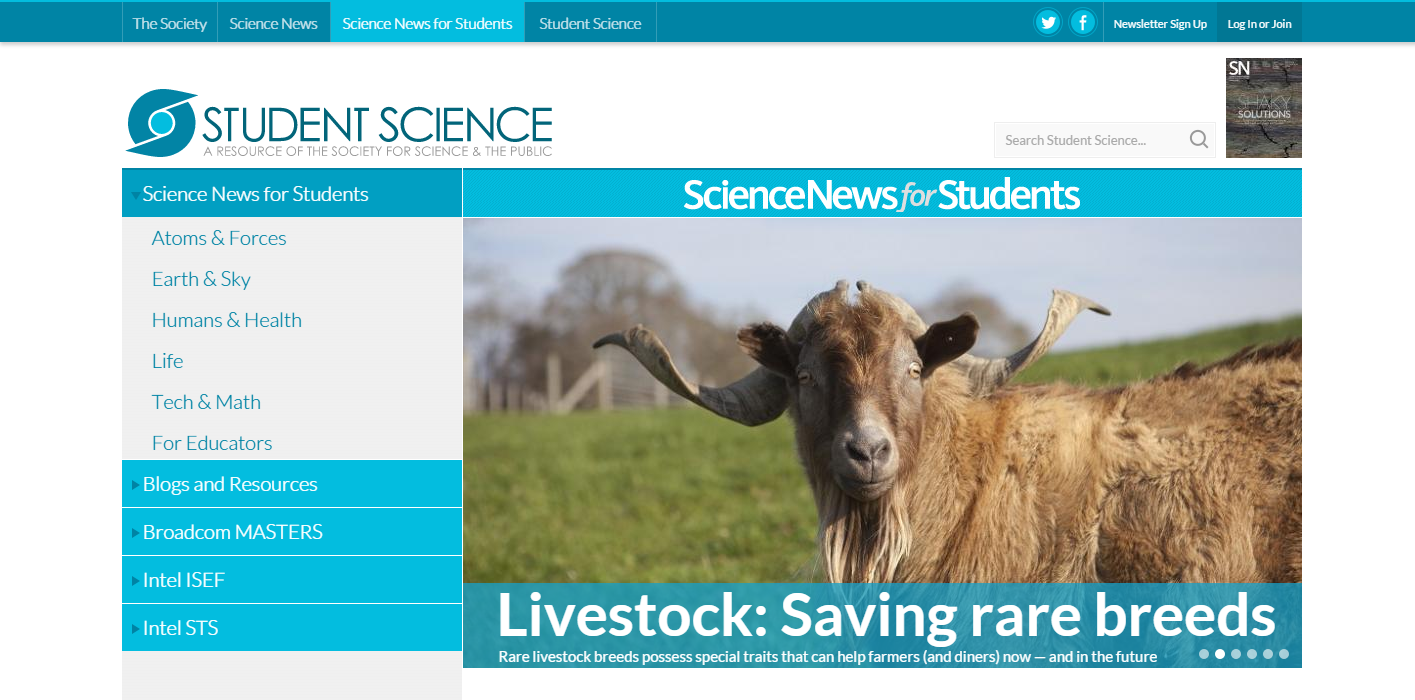Our readability scores on SNS target tweens & teens

Science News for Students is dedicated to reporting on current events in STEM fields that will be accessible to tweens and teens. Yet even adults should find the stories informative and engaging. What’s more, those stories are compatible with the new U.S. Common Core standards for language arts.
As part of our ongoing commitment to ensuring that our stories will be accessible to all students in at least sixth grade, we have for years been holding the readability measures of all stories to a middle-school score. We now also report those scores at the bottom of each piece, beneath the Power Words section.
Our site measures readability with the Flesch-Kincaid algorithm. It weighs the number of syllables and words in each sentence and accounts for the punctuation used. The resulting score represents the anticipated number of years of education required to readily understand the article as a whole. As an example, a readability score of 7 would indicate that the article should be readily accessible to any student from at least the beginning of seventh grade (and younger, where students read above grade level).
So these scores represent the general minimum age for which the material should be readily accessible. Scores tend to vary between 6 and 8 (physics and math pieces may skew a bit higher, although still usually well below 9). The average readability score on the site is about 7.
Clearly, long names, long scientific terms and long researcher affiliations can conspire to bring scores up. Still, we don’t dumb anything down. And that means we don’t remove such often vital information for the sake of lowering a readability score. Rather we tweak sentence length where possible and offer a host of definitions (check out all of those Power Words at the bottom of the articles) to help students parse the explanations of research design and STEM-related mechanisms of action.


